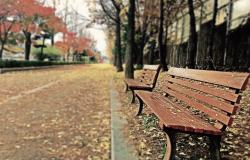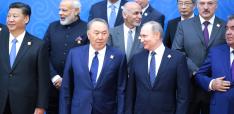Where Angels Fear but Tread

Scott Montgomery explores the ongoing struggle for academic freedoms on US campuses.
Academia in America is having a moment, and it isn’t a good one. Angry articles and commentary, position statements, political fury, plus the requisite sludge of disinformation, have been circulating for months, with few signs of stoppage. It is a new chapter in the culture wars, intensified by the conflict in Israeli. Much media attention has targeted topics that are truly important—academic freedom, DEI (Diversity, Equity, Inclusion), the role of higher education in an open society.
In truth, struggle over these issues has been building for more than a decade, particularly as DEI policies have normalized across the U.S. Everything exploded after the October 7 mass terrorist attack by Hamas and subsequent reprisal war launched by the Netanyahu government. There quickly came university position statements, attacks from wealthy donors, faculty speeches and declarations, and student demonstrations. Predictably, too, it has been an opportunity for right-wing actors to renew their attacks.
Campuses nationwide have been in the gunsights of conservatives for decades, who view the leftward tilt in university politics and teaching as sacrilege. The tilt is real, dating especially from the Vietnam War era. It leaned further in the 1990s, as the right headed into extremist, xenophobic, and more openly anti-intellectual territory. But the cycle of response has been especially accentuated since the invasion of Iraq and rise of Islamophobia, the populist racism that surfaced during the Obama Administration, and then the apotheosis under Donald Trump, whose white supremacist sympathies wore no veils. Though DEI policies had begun a decade before, particularly in California, the flagrant illiberalism of the Trump years kindled fires of outrage throughout the intelligentsia and helped accelerate installment of such policies.
It is now a question of some weight whether DEI has gone too far. The controversy has swept up nearly all other conflicts over academic freedom at this point. Conservatives are not the only ones who speak in opposition, though their tactics of book banning and state intrusions on campus decision-making are especially autocratic and worrisome. But it is also traditional liberals, not all of them white, who feel DEI has, in some cases, become an intolerant orthodoxy of its own.
There seems little doubt that excesses have occurred. An example from my own state (Washington) is a progressive college that created a special “Day of Absence” when white students, staff, and faculty were advised they should not appear on campus (a professor who objected was harassed into resigning). Meantime, there are university departments who have effectively refused to consider any candidate who hasn’t shown “commitments and capacities” to further DEI “through research, teaching, mentoring, and/or outreach and engagement.” A current instance along these same lines brings us back to California, where state officials created a DEI Plan for community colleges (2 million students, 61,000 faculty) to incorporate related principles “into teaching and learning, grading, annual evaluations, and faculty review/tenure processes” (the plan has since been dropped).
“There is a difference,” says PEN America, an organization dedicated to free expression, “between protecting a…faculty member’s right to include D.E.I. programming, and mandating that they do so, especially in higher education.” Nonetheless, related rules of “acceptable” and “unacceptable” language, candidate responses, and more have been put in place by university administrators and department committees, not only in the humanities and social sciences but in the sciences and engineering. Saying such rules are only guidelines isn’t convincing and feigns innocence. One result is that self-censorship is widespread among faculty who question the ultimate value of rigorously policing their own speech and course material for anything that might possibly offend any of their students, who are now highly tuned to such transgressions. There are also genuine concerns of being “found out” as a partial or non-believer and suffering the collegial, reputational, and perhaps promotional consequences.
To be sure, the situation can be easily exaggerated. Claiming that “ideological activism is replacing intellectual inquiry as the primary mission of universities” has been a febrile refrain of the right for decades. As a means to raise awareness, DEI has had real successes. But as a command sensibility of categorical norms, it generates understandable fear and resistance.
A scandale majeur occurred on December 6 when three university presidents, all from high-prestige schools, went before a hostile Congressional committee. They were questioned by one of their own graduates, who proceeded to attack and humiliate them over the issue of whether “calling for the genocide of Jews” violated their institution’s code of conduct. Before the eyes of the world, they each gave the same answer: “it would depend on the context.” As widely noted, had the inquisitor referred to the genocide of Black people, the answer would almost certainly have been immediate with no bother about “context.” Whether the same might be true for Latino, Asian, or Native American people remains unknown. Either way, it was a poor showing, both for their high offices and their larger role as women in positions of elevated leadership.
Presidents Sally Kornbluth of MIT, Claudine Gay of Harvard, and Liz Magill of the University of Pennsylvania (UPenn) must have known they were walking into a trap. They consulted with lawyers beforehand. Either in spite of such consultation or because of it, they were not ready for the aggressive interrogation by Congressperson Elise Stefanik (R-NY), graduate of Harvard Law School. Stefanik, a known, outspoken loyalist of Donald Trump and a denier of the 2020 election, leaned over them like a great insect, eager for blood. The weak replies as much as opened a vein for her.
Stefanik has been excessively proud of herself. Two of the three, after all, lost their jobs. Though Harvard’s Claudine Gay resigned due to revelations of plagiarism, uncovered by the conservative activist, Christopher Rufo, the scandal of her testimony was the initiating factor.
Claims the presidents were sacrificial lambs, as well as accusations of racism aimed at Rufo and helper, are misguided. They fail to capture the reality that calls for presidential ousters have spread irrespective of race. They also warp the true nature of the event and the fallout from it. Finally, they distract from the larger picture, which goes to the heart of what kind of institutions universities should really be.
It’s essential to note, for example, how the resignations have come together with other happenings. This includes the widespread student protests that rose in the wake of October 7, a large majority of which came to be oriented against Israel and strongly in favor of Palestinians. A significant contingent even cheered Hamas for its terrorist mass murder. This also included some faculty, one of whom was “exhilarated” by the attack, who largely charge Israel with war crimes. Even after its president resigned, the UPenn presented its MLK (Martin Luther King, Jr.) Social Justice award to a prof who signed a letter proclaiming Israel guilty of “genocide” and “apartheid.”
Student protests had become overwhelmingly pro-Palestinian and anti-Israel before the December 6 testimony of the university presidents. But these marches, too, brought forward questions about the ambit of DEI—how truly “inclusive” is it? If Jews are now considered “white”—as they were not for most of modern history, up to the 1950s and 60s in the U.S.—is it outside the purview of DEI to deal with antisemitism? The number of antisemitic acts on campus (and off) shot up by nearly 400% in the first month after the Hamas attack and has exceeded those of Islamophobia to date. But then the claim rushes in that Zionism qualifies as a form of “settler colonialism.”
This is a highly charged idea originating in academia, dating from the years after the 1967 Arab-Israeli War (when Israel took possession of Gaza and the West Bank), expanding in use since the second Palestinian Intifada (2000-2005). As concisely put by New York Times columnist Roger Cohen, the situation of the Palestinians in Israel has been taken as representative of “the justice-seeking dispossessed throughout the world.” The effect has been to ignore that nearly half of the Jews who formed Israel in the late 1940s were themselves refugees, not colonials. They fled persecution or were exiled from surrounding Arab countries, abandoning their homes and assets. This does not at all reduce the calamity of what happened to the Palestinians. But it does underline that the conflict cannot be reduced to a simple matter of victims and victimizers. None of this is relevant, however, to contemporary views that accuse the (white) “Zionist political project in Palestine” of racial (non-white) cleansing.
Which brings us to the matter of academic freedom and thus the role of universities. It was Noam Chomsky, I believe, who said that a true test of any institution’s belief in such freedom is whether it would allow Adolf Hitler to present his ideas on German history and “the Jewish question.” Today, this sounds outrageous. But Chomsky had a point.
In 2015, the University of Chicago famously published a short essay on what academic freedom means. Then president, Robert J. Zimmer, and Provost Eric D. Isaacs, appointed a group of scholars to write a concise statement of principle. It says that an institution’s commitment to “debate or deliberation may not be suppressed because the ideas put forth are thought by some or even by most members of the University community to be offensive, unwise, [or] immoral…” And further: “Although members…are free to criticize and contest [such ideas] they may not obstruct or otherwise interfere with the freedom of others to express views they reject or even loathe.” The university’s mission is thus “to protect that freedom when others attempt to restrict it.” (my italics)
Zimmer did the greater community of academia a much-needed turn by pursuing this powerful statement. More than 100 colleges and universities have endorsed and adopted the report’s principles. In truth, the 2015 statement was partly modeled on a similarly brief statement in 1967, the Kalven Report on the University’s Role in Political and Social Action. This spoke of the need “to provide enduring challenges to social values, practices, and institutions,” to be not the voice but instead the neutral “home and sponsor of critics.” It has been observed that the Kalvin Report was not itself entirely “neutral” in its own motives, being in part a response to student demands the university divest from apartheid South Africa. This does not invalidate the ideas just quoted—which have much relevance to the present—but it does suggest how they can be abused to mask other, objectionable priorities.
A problem exists, however, with “neutrality,” a widely used term that too easily implies forced unconcern or inertness. Universities, viewed from the inside, are never “neutral” about any major issue. The diversity of relevant expertise, interpretation, opinion, and discussion is real. A key reason why any position statement by a university president counts as an absurd misrepresentation—or an apparent attempt to impose norms. There are a few exceptions—when the university’s very existence may be threatened, or when there is public debate about the purpose, worth, and credibility of higher education itself. But a far better action to have taken in the wake of the Hamas attack would be to remain silent at the official level while creating opportunities for students and the public to learn, e.g. a lecture series that reviews the history of Palestine and its conflicts, offering a podium for various viewpoints, plus venues for faculty and student discussion.
At the last, the university has never been, nor can it be, the moral conscience of society and the nation. Six decades ago, the public intellectual Paul Goodman, in The Community of Scholars (1962), took postwar higher education to task for failing to be what his title describes. Instead of “small cities,” foreign to society yet “active in the world,” self-run and full of “practicing philosophers” who understood what lay beyond the walls of the campus and textbook, they had become training centers, forgetful of origins, vulnerable to outside pressure. These were exaggerations that worked better as omens.
But Goodman was on the mark with something else: any real community in this setting, he said, needed to be protected, so that, in comparison to society, members were drawn together by “different rules of truth and evidence that cannot be disregarded when it happens to be convenient.” The greatest threat to academic freedom is the same as that to freedom of speech—the autocratic state. It is when a university ceases to be truly independent, acting either as an extension of such a government or as one itself, that it becomes its own worst enemy.
Scott L. Montgomery is an author, geoscientist, and affiliate faculty member in the Jackson School of International Studies, University of Washington, Seattle. He has 25 years' experience in the energy industry, where he worked on projects in many parts of the world. His many technical publications include papers, monographs, articles, and textbooks, mainly focused on cutting edge hydrocarbon plays, technologies, related impacts and issues.
The views and opinions in this post do not reflect those of Global Policy, Durham University or Wiley. They are the author's own.
Photo by Zino Bang


